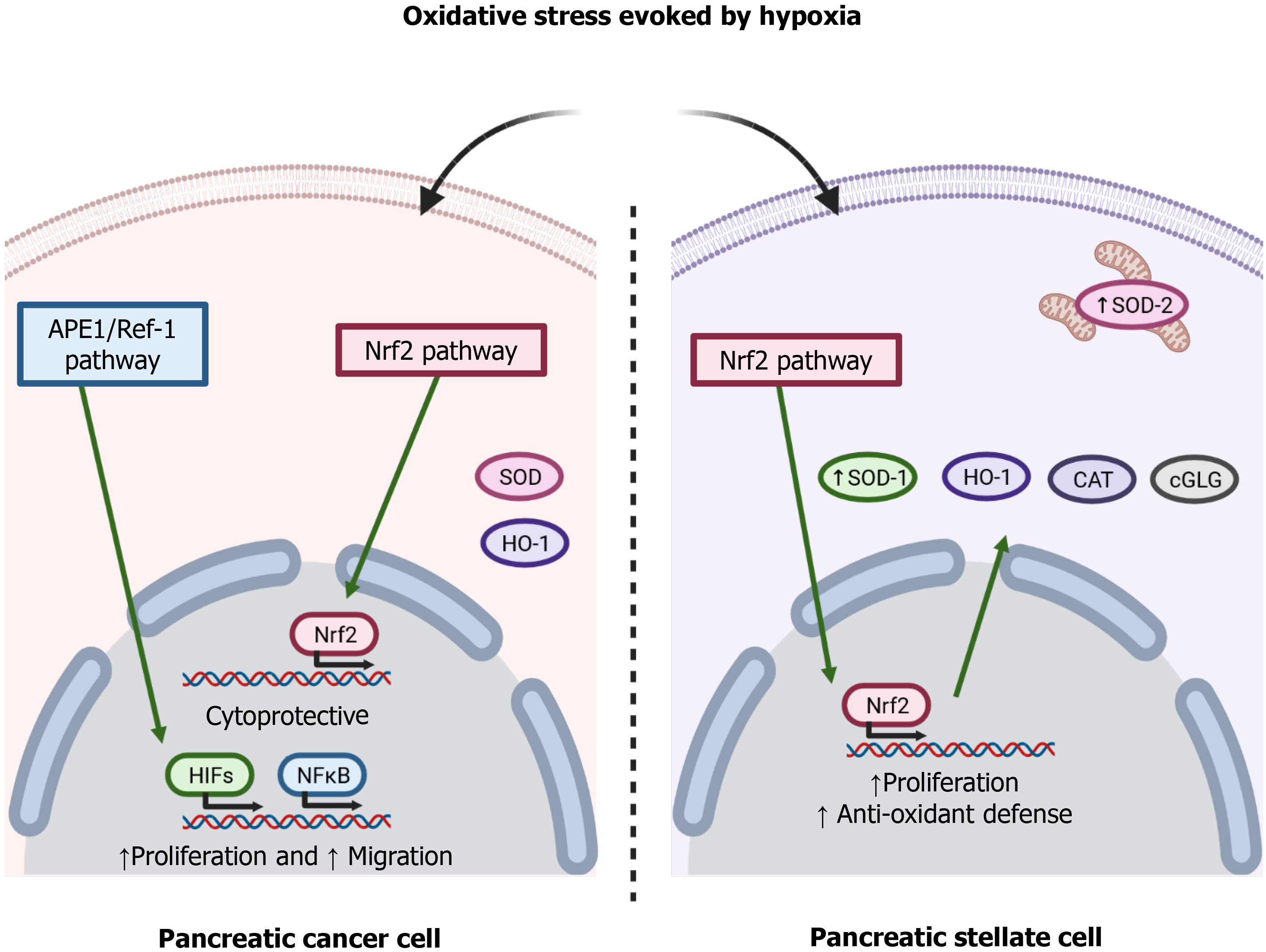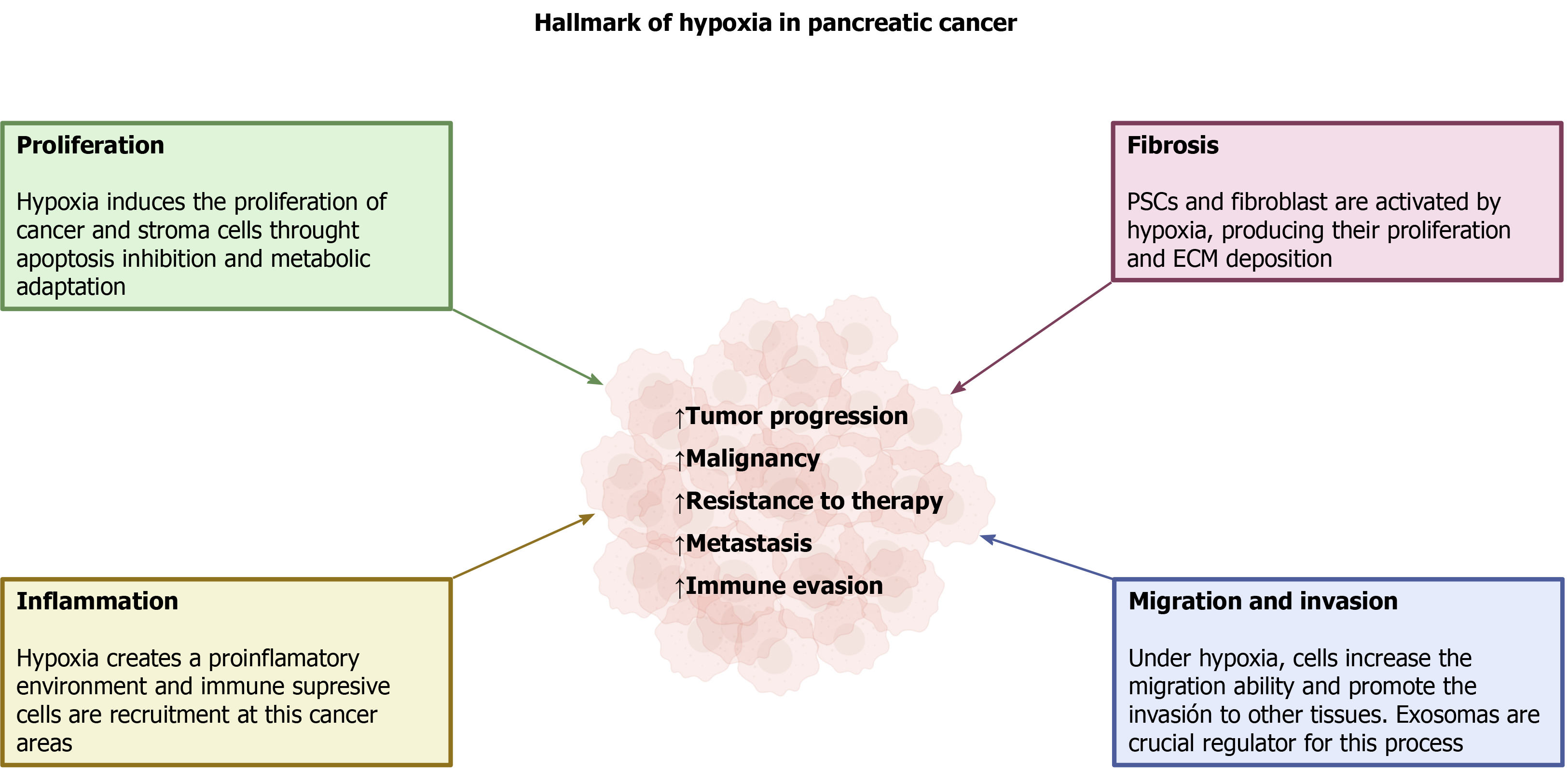Copyright
©The Author(s) 2021.
World J Gastroenterol. Jul 28, 2021; 27(28): 4582-4602
Published online Jul 28, 2021. doi: 10.3748/wjg.v27.i28.4582
Published online Jul 28, 2021. doi: 10.3748/wjg.v27.i28.4582
Figure 1 Illustration of the cells that form tumor tissue.
Both tumor cells and the stroma contribute to the formation of tumor tissue. The latter comprises fibroblasts, stellate cells, immune cells, secreted components such as cytokines or extracellular matrix proteins, and the vasculature. Depending on their location in the mass, all cells are subjected to hypoxia to differing extents. Created with BioRender.com.
Figure 2 Hypoxia-evoked antioxidant response.
In response to the increase in the generation of reactive oxygen species under hypoxia, cells activate intracellular pathways that provide antioxidant protection. Among them, the Nrf2 pathway plays a critical role by coordinating the activation of cytoprotective genes that lead to the expression of major antioxidant enzymes. Created with BioRender.com. APE1/Ref-1: AP endonuclease1/Redox effector factor 1; HIFs: Hypoxia-inducible factors; NF-B: Nuclear factor kappa-light-chain-enhancer of activated B cells; Nrf2: Nuclear factor erythroid-related factor 2; SOD: Superoxide dismutases.
Figure 3 Contribution of mitogen-activated protein kinase signaling to cell responses under hypoxia.
Mitogen-activated protein kinases comprise of a family of proteins that regulate physiological processes such as cell proliferation, differentiation, and survival, which play major roles in cancer development and progression. Differential inhibition of protein kinases might be used to attenuate the progression of the disease. Created with BioRender.com. ERK5: Extracellular-signal-regulated kinase 5; JNK: c-Jun amino-terminal kinase; MAPKs: Mitogen-activated protein kinases; PC: Pancreatic cancer; PSC: Pancreatic stellate cells.
Figure 4 Hallmarks of hypoxia in pancreatic cancer.
The figure summarizes the major adaptive features of pancreatic tumor cells in response to hypoxia. In general, low O2 availability worsens the prognosis of pancreatic cancer by promoting increases in tumor progression, drug resistance, immune evasion, and metastatic ability. Created with BioRender.com. ECM: Extracellular matrix; PSC: Pancreatic stellate cells.
- Citation: Estaras M, Gonzalez A. Modulation of cell physiology under hypoxia in pancreatic cancer. World J Gastroenterol 2021; 27(28): 4582-4602
- URL: https://www.wjgnet.com/1007-9327/full/v27/i28/4582.htm
- DOI: https://dx.doi.org/10.3748/wjg.v27.i28.4582












